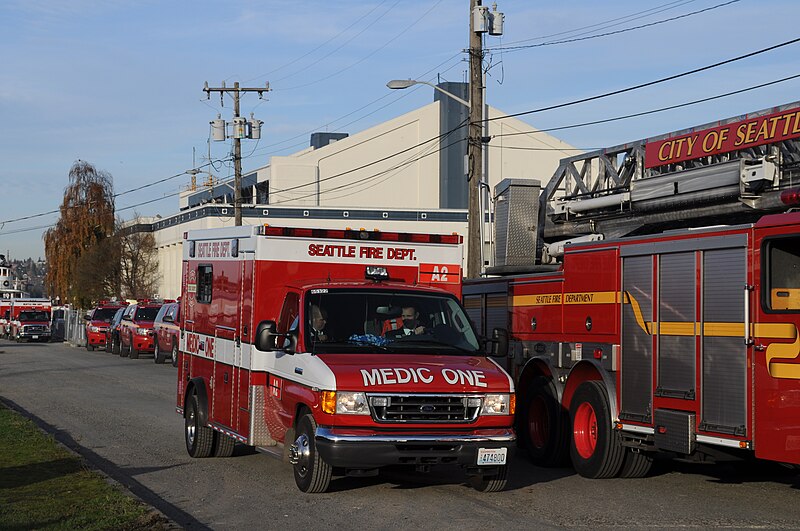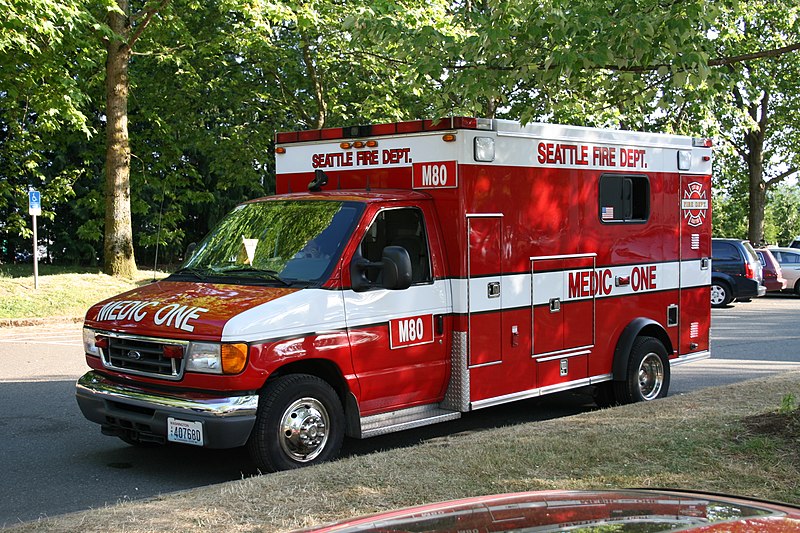
By LéTania Severe
The Seattle City Council is considering legislation to protect firefighters responding to emergencies, making it a crime to physically interfere with them as they try to provide aid.
This proposal, which would expand the existing law against “obstructing” police officers to include Fire Department personnel, will not only fail to protect firefighters, it will make things worse for them and the communities they serve—particularly the Black community members who face disproportionate arrests and prosecutions under the existing “obstruction” statute.
How do I know this? For the last five years, I have been a firefighter/EMT for Central Pierce Fire and Rescue, giving me a front-row seat to the challenges of the job.
While my firefighting work is in Pierce County, I currently live and rent in Seattle’s District 2. I also have a PhD in Sociology and have spent the last 17 years researching homelessness, housing, and criminal legal system policy in Seattle and the broader region. I am Black, queer, and nonbinary, and I co-led the Black Brilliance Research Project, funded by City Council to answer questions around how we build community safety and community health. These experiences have equipped me to assess the current bill before City Council and compel me to speak out against it.
Firefighters are called to respond when people are having their worst day. Firefighters remind each other about this often. It helps ground us so that we don’t take people’s behavior or words personally. As firefighters, we work for the people. We don’t force our service onto people; that’s not our job. We ask them why we were called and what they need.
Firefighter work is stressful and grueling. I can tell you from experience that 24-hour shifts do not result in us showing up to calls with our best selves. Being woken up in the middle of the night to answer the community’s call for help when you are already sleep-deprived is demanding and keeps firefighters in a heightened “fight mode” for the entirety of our shift.
These conditions are among the biggest challenges we face. But the proposal before the council, which criminalizes community members for interfering with firefighters, does nothing to address the stress and impact on our bodies caused by our work.
The proposed legislation does nothing to address any of the underlying reasons that trigger the need for an emergency response. In fact, our community has seen money moved out of these areas of upstream intervention in order to put more money into policing the results of these failures.
Sometimes as firefighters, the stress we shoulder aggravates the situations we enter. In my experience, these are the times when we experience “obstruction” from the patients we serve. For example, impatient firefighters sometimes wake someone up from an overdose too fast by administering Narcan too quickly. In these situations, the person’s body will react with shock and confusion. That person should not be blamed for their body’s response. When we arrive on a call to an individual experiencing a mental health crisis, we should hold them in grace as we focus on helping them move through it and then do our best to address the root causes of that crisis.
Other examples of our own stress as firefighters aggravating the situations we enter include firefighters escalating stressful situations instead of showing compassion and using de-escalation skills; firefighters taking a patient’s refusal of services personally and attempting to force their services on a patient who does not want it; and firefighters not respecting the agency of patients
This bill doesn’t address any of these situations. Instead, it makes things worse by criminalizing the very communities we are called to serve.
We all know that firefighters are often called to intervene because of bigger system failures. Indeed, the proposed bill’s language acknowledges as much: “[I]t is well known that the challenges faced by all our public safety employees at the City of Seattle have increased with the rise of the opioid epidemic, economic uncertainty, and multiple public health crises – COVID, mental health, and substance use.”
And yet the proposed legislation does absolutely nothing to address any of the underlying reasons that trigger the need for an emergency response. In fact, our community has seen money moved out of these areas of upstream intervention in order to put more money into policing the results of these failures. This bill, which expands expensive and harmful criminal legal system responses to social problems, continues the same pattern.
This bill claims to “give our fire department employees in the line of duty an additional tool for their personal safety and the ability to secure the scene of a medical health response or fire response, particularly in the case of bystander intervention while firefighters and paramedics are providing aid.” But this legislation won’t actually prevent “bystander intervention,” because it relies on the police to respond and arrest only after an alleged interference. This bill does not deter anything. Instead it will make things worse by criminalizing behavior that can be better mitigated by addressing root causes.
What could a better bill do?
A better bill would move funding for addressing overdose calls from SFD and SPD to community members instead. Bystanders safely administer Narcan in the field every single day. They save lives and they do so compassionately, because unlike firefighters, they often know the person, or the person is a member of their community.
It is well established that firefighters and police officers are extremely ill-equipped to meet the needs of community members experiencing a mental health crisis. I have never received good training on responding to calls in which individuals are in mental health crises and I’d bet that Seattle firefighters haven’t, either.
The common denominator between overdose and mental health calls is that they require an immense amount of patience. When fire departments are understaffed, patience goes out the window. Again, this bill does not address this problem. There are many things that can improve our job, such as more training, more staffing, better schedules, addressing system failures, more tools to regulate our nervous systems on shift, de-escalation training, Narcan administration training and mental health crisis response training.
What if rather than expanding a system that causes harm, we actually focused more on assessing which social safety nets have utterly failed the folks who need us? What if we moved funding out of SFD and SPD to empower community members to respond to mental health crises? What if we actually committed to addressing the root causes?
I suspect we will be told that addressing root causes is impossible given Seattle’s budget deficit. But it’s never too late to reallocate funding from our bloated punishment budgets (police, courts, and prosecutors) toward making firefighter jobs and our community safer. If the City Council cares about firefighter safety and community safety, they will vote NO on the current obstruction bill, and fund community response instead.


 By Erica C. Barnett
By Erica C. Barnett

 The unanimous vote means that after the budget is approved by the agency’s governing board—a group made up mostly of elected officials that is charged with approving the implementation board’s decision—it will be up to city and county elected officials to decide whether to fully fund the request or eliminate some items,
The unanimous vote means that after the budget is approved by the agency’s governing board—a group made up mostly of elected officials that is charged with approving the implementation board’s decision—it will be up to city and county elected officials to decide whether to fully fund the request or eliminate some items, 